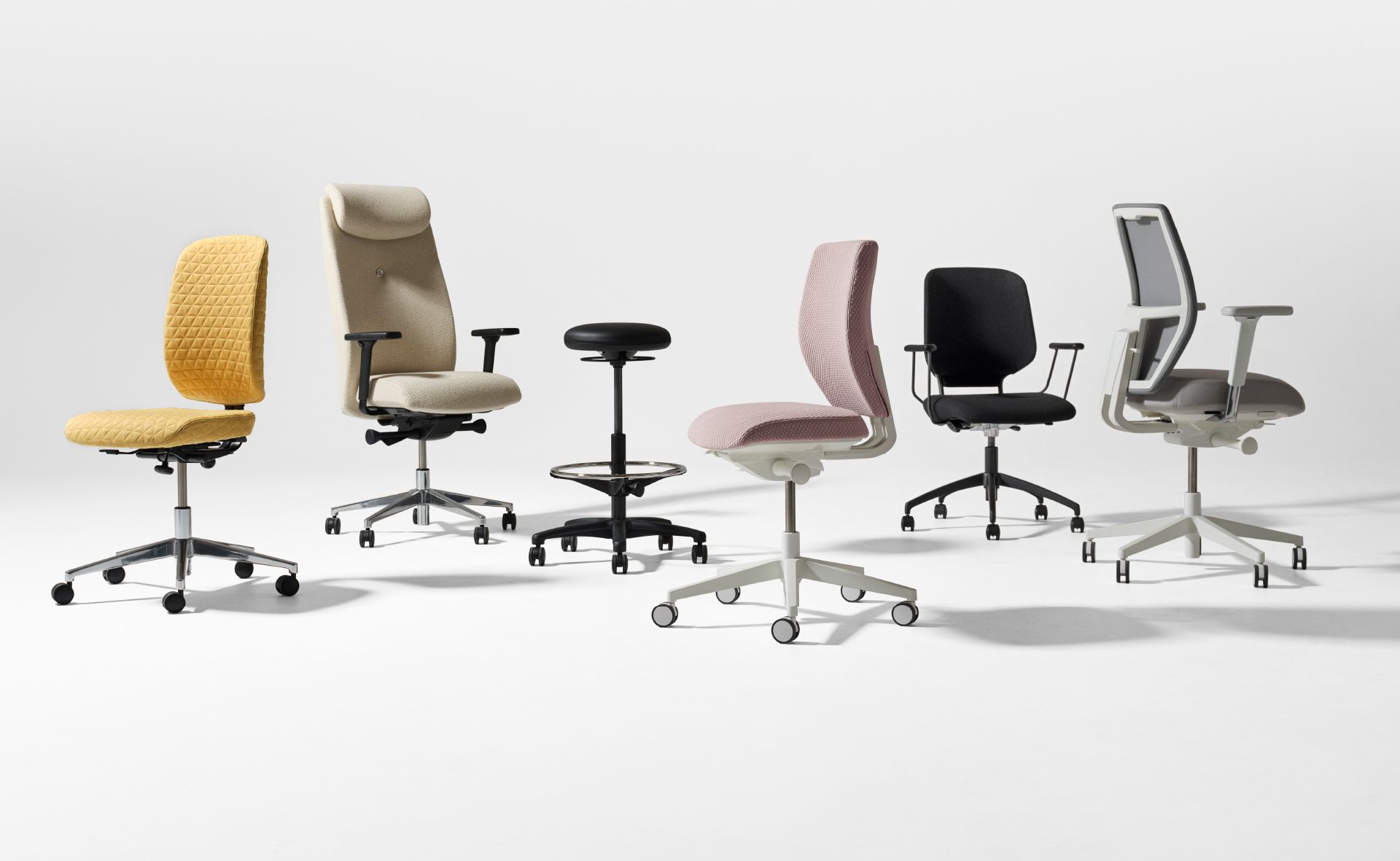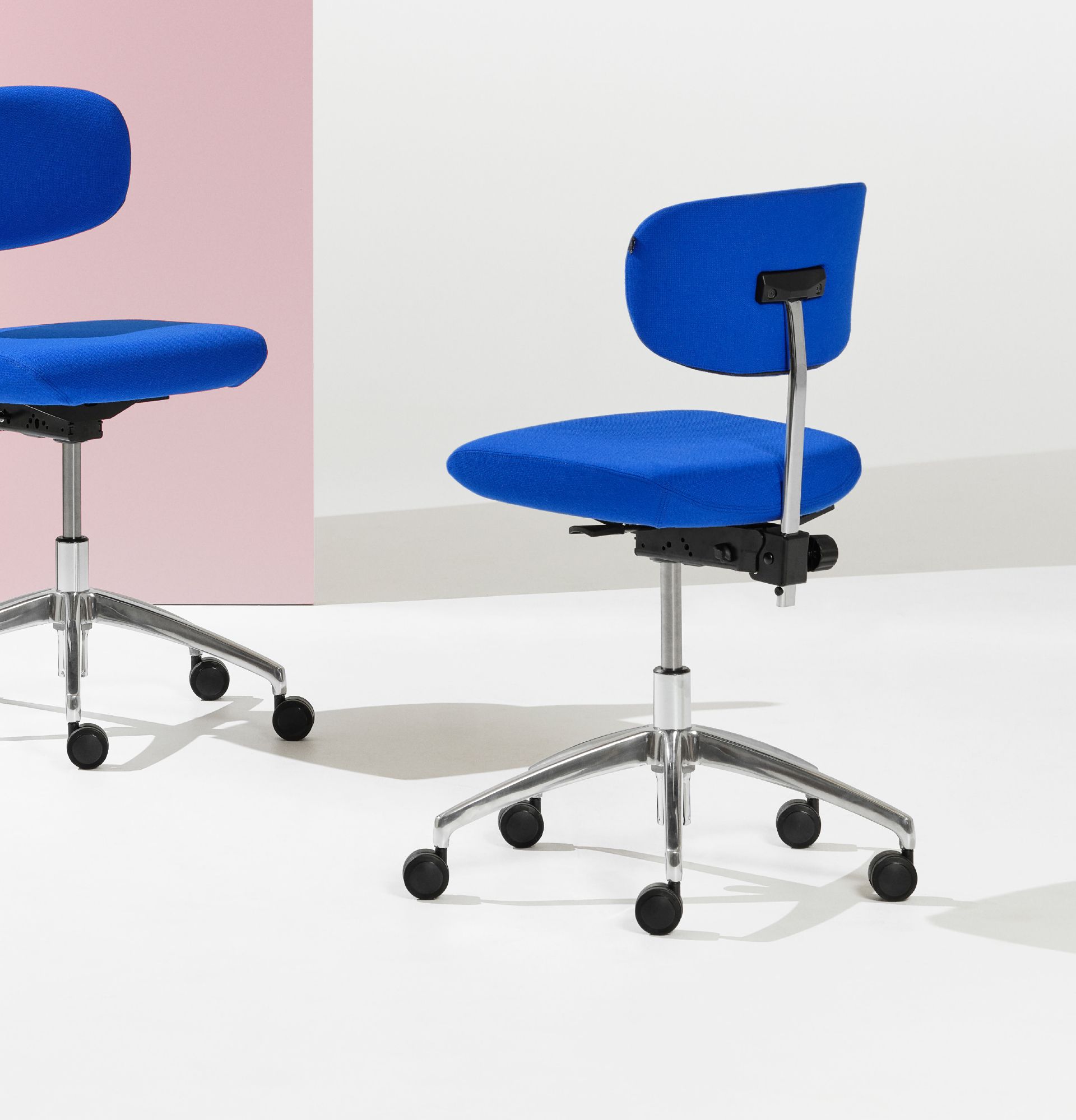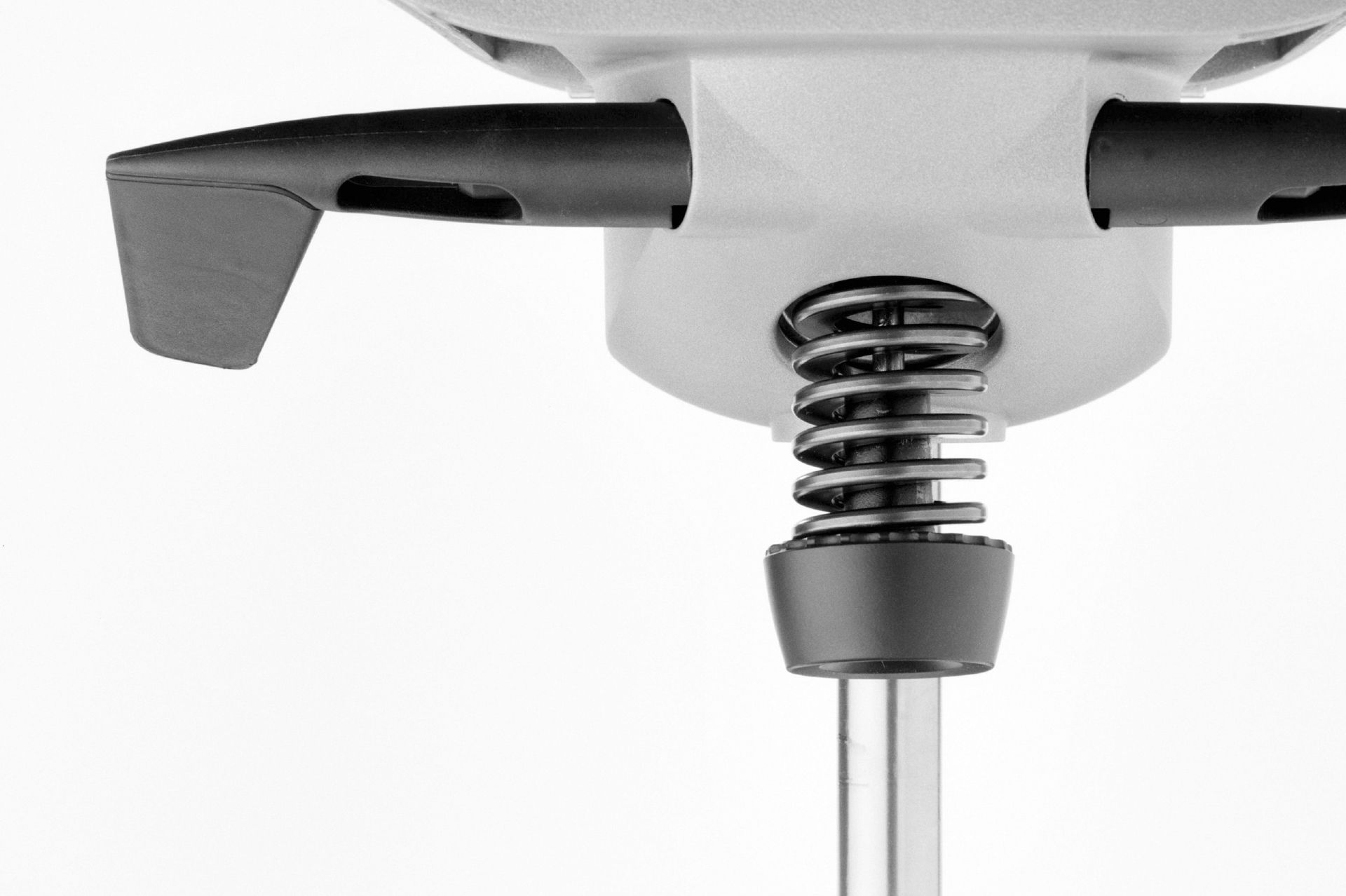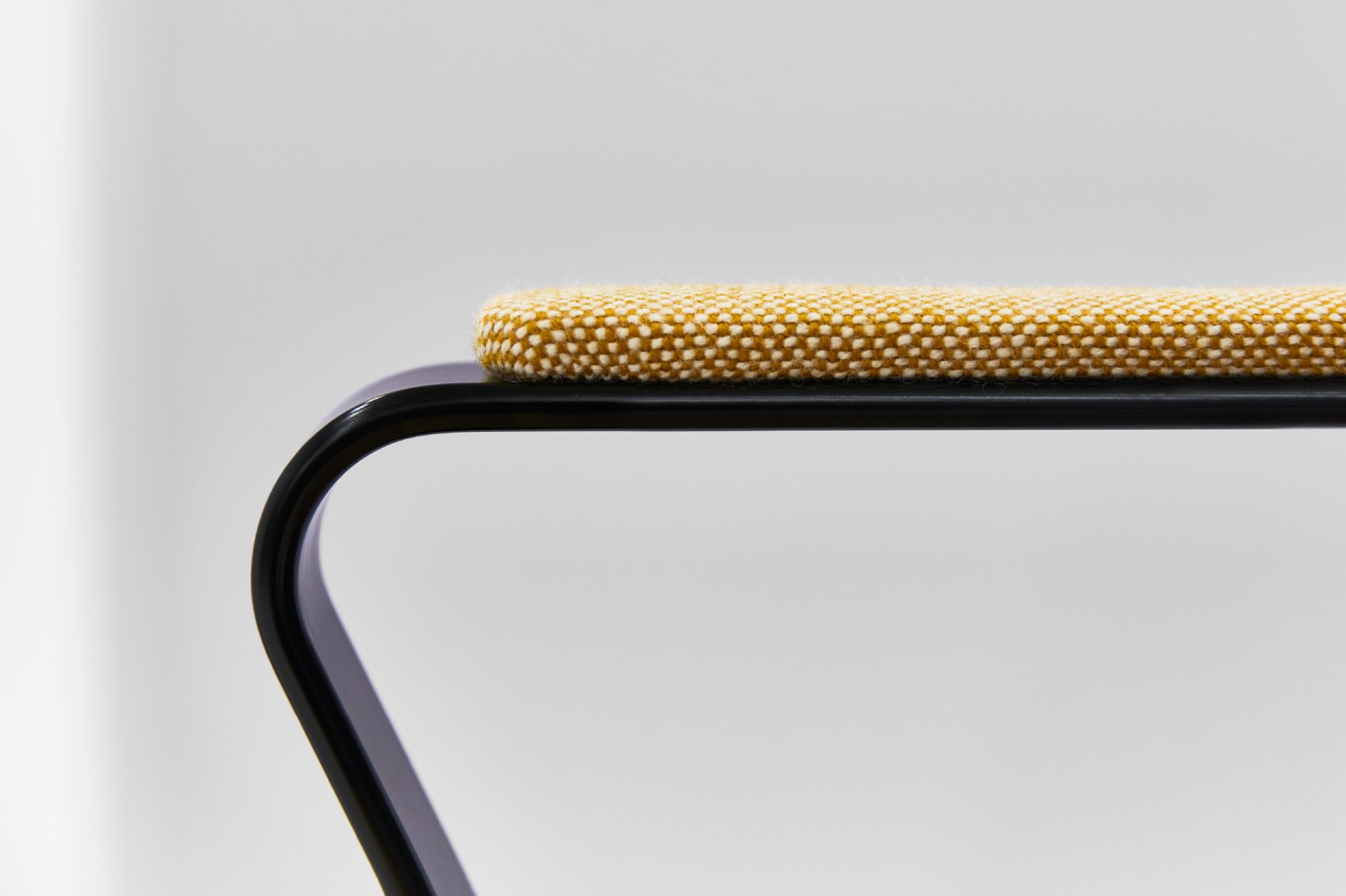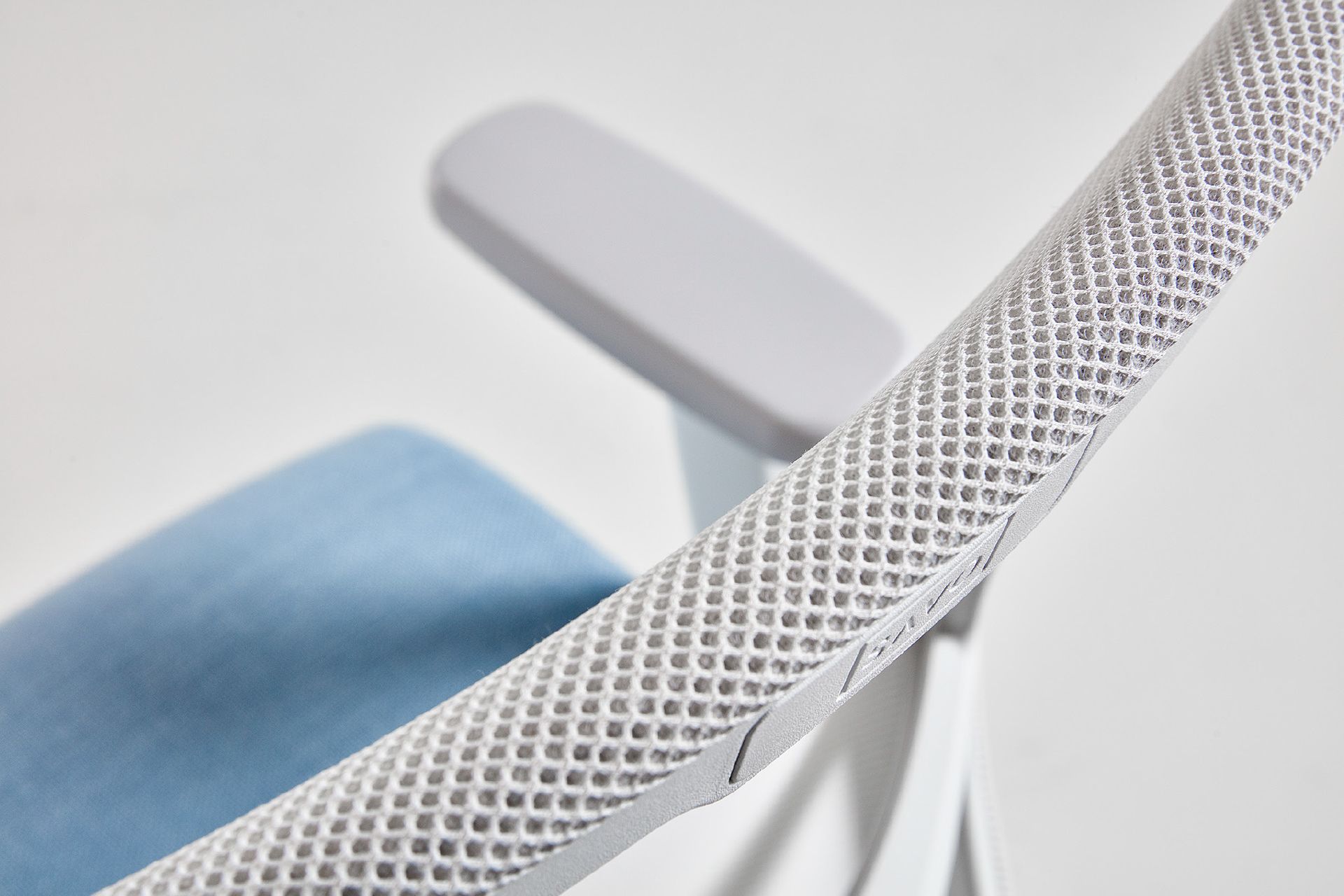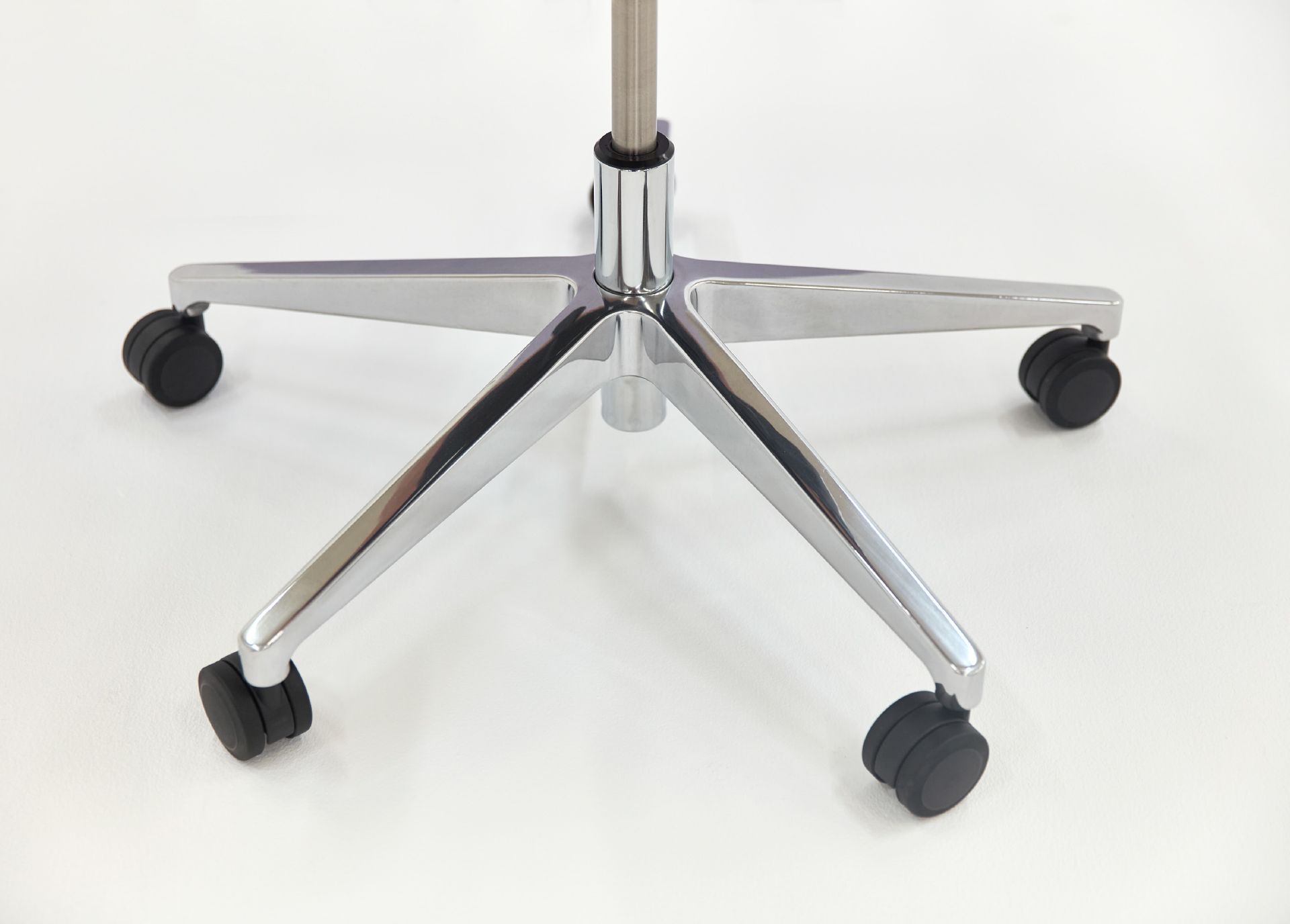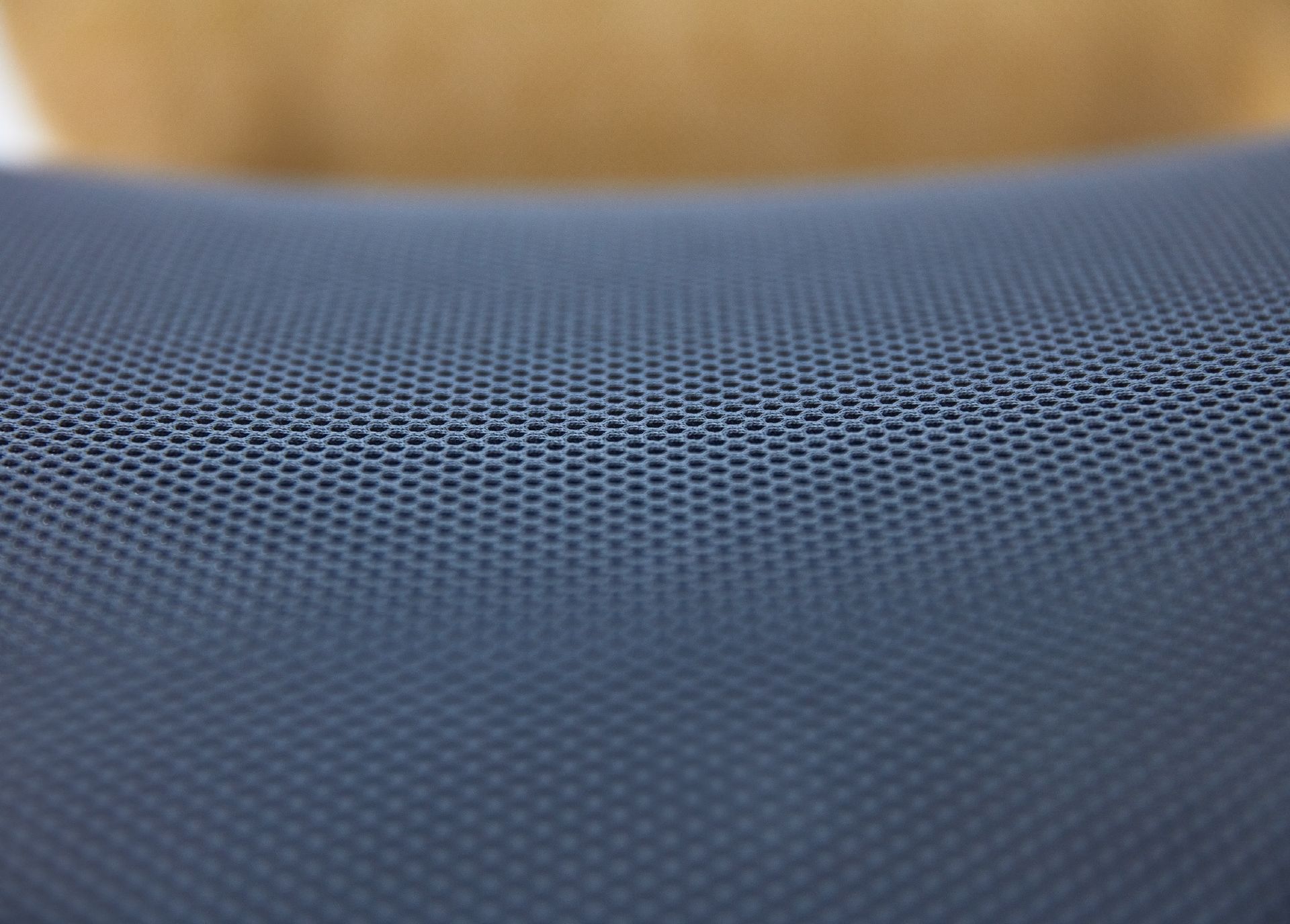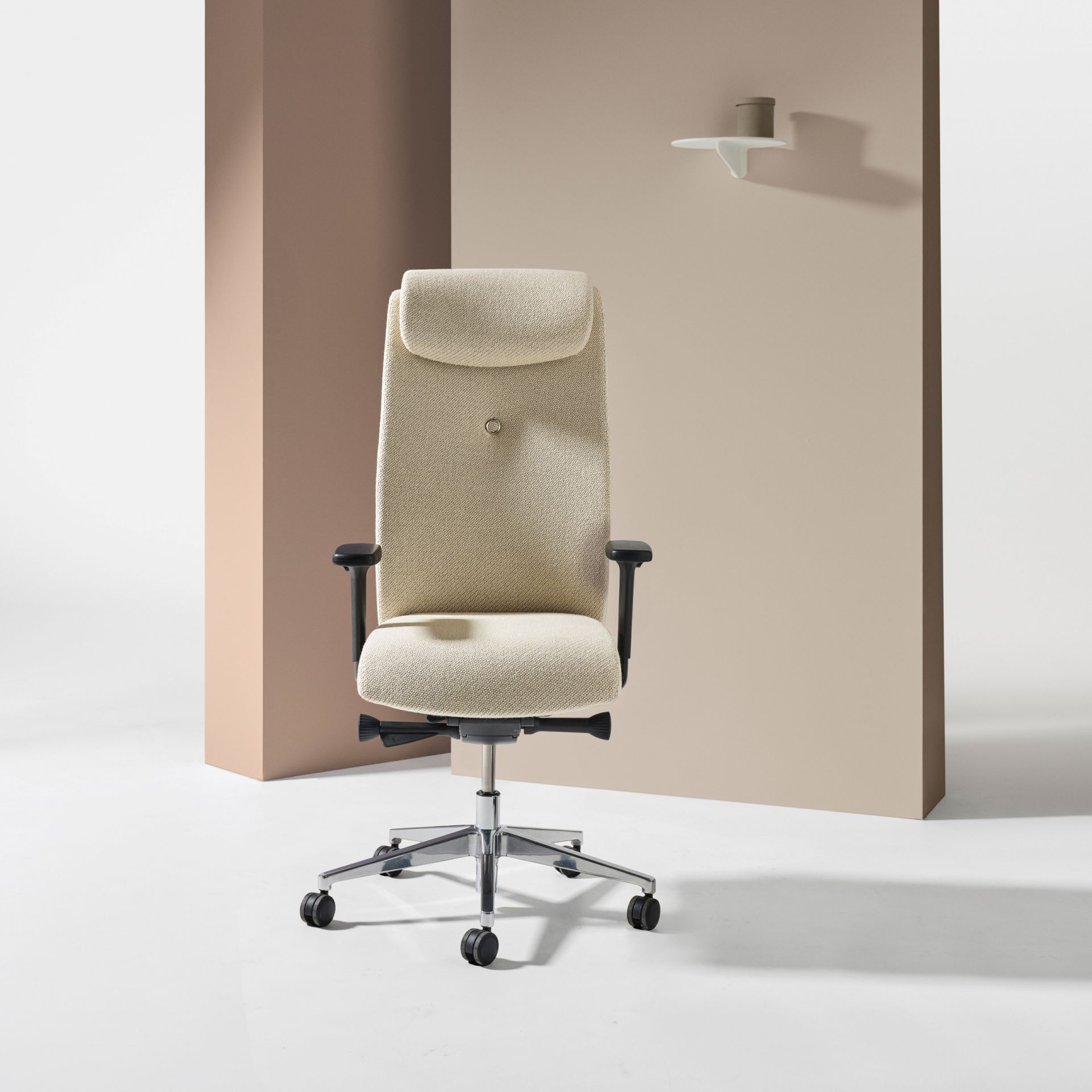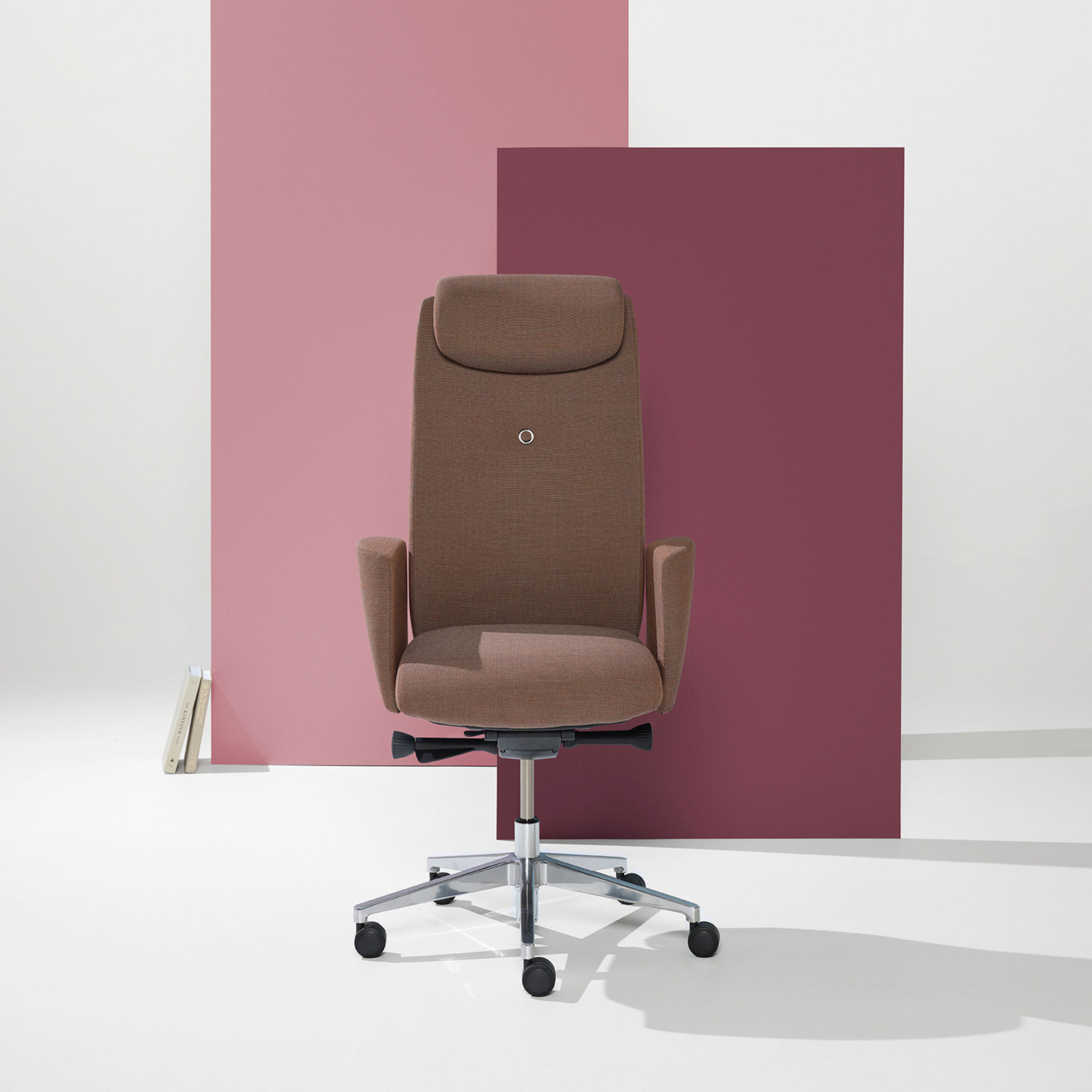Move freely with swivel stand and casters
Many office chairs have swivel stands with casters that assist your back musculature and make it easy to turn to reach something on your desk, for example. Will the chair be on a plastic, wooden, carpeted or concrete floor or tiles? This influences the choice of suitable casters. Savo has braked and decompression braked casters for hard floors and non-braked casters for soft floors.
Chair upholstery is more than mere aesthetics
While upholstery is a major part of a chair’s visual expression, it is also important for comfort. The fabric should be durable enough to withstand 8 hours sitting. A mesh fabric back is a good choice for preventing the chair from becoming too hot or uncomfortable after many hours seated. In some environments with high hygiene standards, it is necessary to use chairs in e.g. integral skin foam that can be wiped off. Leather is easy to clean, but fabric upholstery can feel cooler.
